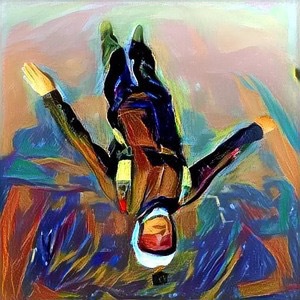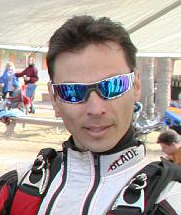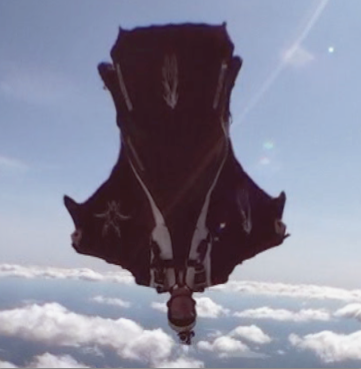Recommended Posts
I left the conversation saying that when he does manage to logistically get everything he needs together and he does the testing it would be great to see the results. I also asked why normal aircraft testing wasn’t done using any of the products listed above (why do aircraft have a probe sticking into clean air on static points on the frame) and why do instruments correct for an whole array of errors in their calculations.
The manufacturer specification you have quoted as your call card, in which context are those parameters setup? At the least I would like to know if it was in a lab, wind tunnel, small aircraft frame, big aircraft frame on a free falling skydiver or on a wing suit flying at 30mph? Does it matter whether the device is in my helmet or my wrist or my ankle or sticking out into clear air?
All done with good attitudes and in the spirit of my original post last week. But unfortunately nothing was proven….
In my travels though I have found the below from the L&B manuals…
“”Definition True airspeed (TAS) and Skydiver’s airspeed (SAS) are two methods to calculate airspeeds.
TAS is a term used in aviation: It is the speed of an object relative to the surrounding air, regardless of the altitude.
SAS is a new concept developed by LARSEN & BRUSGAARD:
SAS is the speed of a skydiver calculated from measurements of air pressure and temperature and converted to a fixed air pressure (875.3 mb) and a fixed temperature
(+7.080C) which corresponds to 4,000 feet ASL.
TAS
A skydiver’s True airspeed (TAS) relative to the ground changes as a function of the altitude (air pressure) and temperature which makes it difficult to compare fall-rates.
Example: A skydiver (in a fixed freefall position) who has a terminal fallrate of 62 meters/sec at 10,000 feet. will have a terminal fallrate of 50 meters/sec at
3,000 feet.
It will be seen that the difference in altitude (air pressure) makes it difficult to compare the fall-rates when recorded in TAS.
The SAS formula calculates, using the TAS information, as though the complete skydive had been performed at a fixed air pressure and a fixed temperature which
corresponds to 4,000 feet ASL. 4,000 feet is the chosen reference by LARSEN & BRUSGAARD since this is the average altitude at which the working time of a skydive is normally ended.
Conclusion
Using SAS, skydivers in any body position can express their vertical speed by a number (SAS). This number remains virtually constant regardless of altitude with
little or no variance due to temperature differences and can be compared with the airspeeds of other skydivers. This means that regardless of the elevation of the DZ you are jumping at, SKYDIVER’S AIRSPEED (SAS) will be the same for the same body position.””
My one concern with the explanation is the contradiction of “any body position” in sentence one vs “the same body position” in the last sentence. But maybe I’m understanding it wrong. But assuming the explanation means that the same SAS can be expected for the same body position it would throw out any assumptions made of comparing wing suit decent rates since we are all separate ir frames with different body position. Correct me if I’m wrong – I might be.
I have fired off an email to L&B to answer my question – perhaps there is some engineer lurking in these forums that can speed up the process….does the explanation above (from the manufacturers manual) mean that SAS is comparable (after some assumptions – like its mounted in the same place AND ONLY for the same body position) to other SAS numbers but NOT to TAS which is the true airspeed?
If this is the case then I suppose the manufacturer has admitted to not giving us the true decent rate but SAS which is a number ONLY relative to other SAS numbers or TAS numbers under the same constant conditiions assumed in SAS calculations.
If you do not use SAS (which seems more popular so I’m assuming you do) but use TAS then I'm comfortable or more comfortable assuming that the sensors which are all within a housing would perhaps pick up a difference of 10mph decent rate from 150 mph to 140 mhp (lets say 6% decrease) but when you are flying a wing suit at 30mph that difference is a massive increment on the total available decent left to level flight - 10 mph is now 33% decrease. Measuring true airspeed TAS is a fairly delicate process with extremely delicate and much bigger instrumentation required as far my understanding goes. First and foremost you would need clean air flow (as you will see any licensed aircraft). Something almost probe like sticking into clean air - the other problem is if you would have used something like that there would have to be some kind of correction made for the affect the instrument has on the performance it measures (i.e. it changes your profile).
Looking forward to any response from anyone in the field or a reply from the manufacturers...i have also asked them for proof or data sets to confirm the tolerances they have provided and the conditions under which these tolerances have been set (i think this would make a massive difference).
I'm definately learning here, so any corrections in the fundamentals would be appreciated!
~ time is ~ time was ~ times past ~
Pierre, you bring up a good question about testing and like most things in this sport, it's not the first time and someone has done the testing. Back when the Protrack, Dytter, dirt alert, cool and groovy,etc audibles first came out the same questions were asked and if I can find it, I will point you to the data Gary Peek gathered. Just keep in mind when reading the article that this was done some time ago but Gary has more up to date info if you contact him. The article is HERE. Many of the modern units use similar algorhthyms but each has their own proprietary twist. If you ever have the opportunity to talk to Roger form Alti-2, he can answer these types of questions off the top of his head and he has tons of data to show. But in the mean time, I attached a little something below to help you out. ![]()
Some people dream about flying, I live my dream
SKYMONKEY PUBLISHING
shot van ![]()
~ time is ~ time was ~ times past ~
I'll let you have the last word on this in the forum, so your version of our conversation will be the one for the record.
Blue skies,
Brian
That's hilarious. Thanks for the laugh.
But you may want to disclaim that it is indeed a joke. Otherwise, if my experience serves well, you may start getting a flood of orders from people (a few suit manufacturer's too) who actually think it's a legitimate product.
See you at Eloy for the boogie,
Brian
Heffro1 0
Just in case anyone failed to read the headline of this post,
TO ALL TONYSUIT SERIES 2 WINGSUIT OWNERS,
Basically what that means in simpler words is if you have already purchased a wingsuit from Tonysuits, and it was our second series wingsuit then this post was directed at you. If you own any other suit this post was not directed at you, sorry for the confusion, perhaps next time we make a post that is directed "only at our customers" we will try to make it much more clear, although I'm not sure it could have been any clearer.
To all that commented on here in a (derogatory manner), particularly Scott who do not already own a series two Tonysuit wingsuit get a girlfriend a boyfriend or a life. With the exception of Jarno.
Now for those of you that are questioning how we can determine this difference in fall rate the answer is this was tested over hundreds of jumps.
On my first original SM1, it was made with the hip wing attachment point only in the front side of the wing. I then did over 700 jumps on this suit.
When I got my new SM1, it had the wing attached at the front and back, immediately I noticed a huge difference in fall rate when i maxed out, so we tweaked the patterns and got much better results, after putting over 200 jumps on my new suit I went back to my original SM1 and noticed a difference in fall rate that was slower.
We then decided to pick the stitch on the backside of the wing. But before we did this we felt that because of how "data hungry" alot of people are we should wear our altitrack just to show that it really does work.
so I went and did a few jumps (wearing the Altitrack) with the wing still attached in the front and back, picked the back of the wing and did a few like that and the numbers told me what I already knew.
Sorry for not wearing a g.p.s. unit, kriszfly sent us a g.p.s. with no directions and a European plug ![]()
So in conclusion; pay attention to the post you are commenting on; if you don't have one, get a life; data is easily corrupted, even the almighty G.P.S.![]()
![]()
My Website
Tony Suits
[url "http:/







Garmin Foretrex 201 GPS
GPS accuracy:
Position: < 15 meters, 95% typical
Velocity: 0.05 meter/sec steady state
DGPS (WAAS) accuracy:
Position: < 3 meters, 95% typical
Velocity: 0.05 meter/sec steady state
L&B Altitrack
Tolerances:
Exit altitude: +/- 1.2%
Deployment altitude: +/- 1.2%
Freefall time: +/- 1 sec
Speed (TAS/SAS): +/- 3 mph (+/- 5 kmph)
Present altitude: +/- 10 ft
L&B Protrack
Tolerances:
Exit altitude: +/- 1.2%
Deployment altitude: +/- 100 ft. (+/- 30 m)
Freefall time: +/- 1 sec
Speed (TAS/SAS) when mounted on the wrist or leg:
+/- 3 mph or +/- 10 ft/sec
+/- 5 kmh or +/- 1 m/sec
L&B Viso
Tolerances:
Exit altitude: +/- 1.2%
Deployment altitude: +/- 1.2%
Freefall time: +/- 1 sec
Speed (TAS/SAS): +/- 3 mph (+/- 5 kmh)
Present altitude: +/- 10 ft
The respective manufacturers market and sell their products with these specifications listed. In other words, if these numbers are wrong, they've committed fraud.
I've yet to be convinced they're guilty of such deception, but I'm open to that possibility. Please, someone provide more than pseudo-skepticism and innuendo (reports of experimentation without any proof/data are inadmissible for any useful purpose) to contradict the claims these manufacturers have made.
Blue skies,
Brian
Share this post
Link to post
Share on other sites